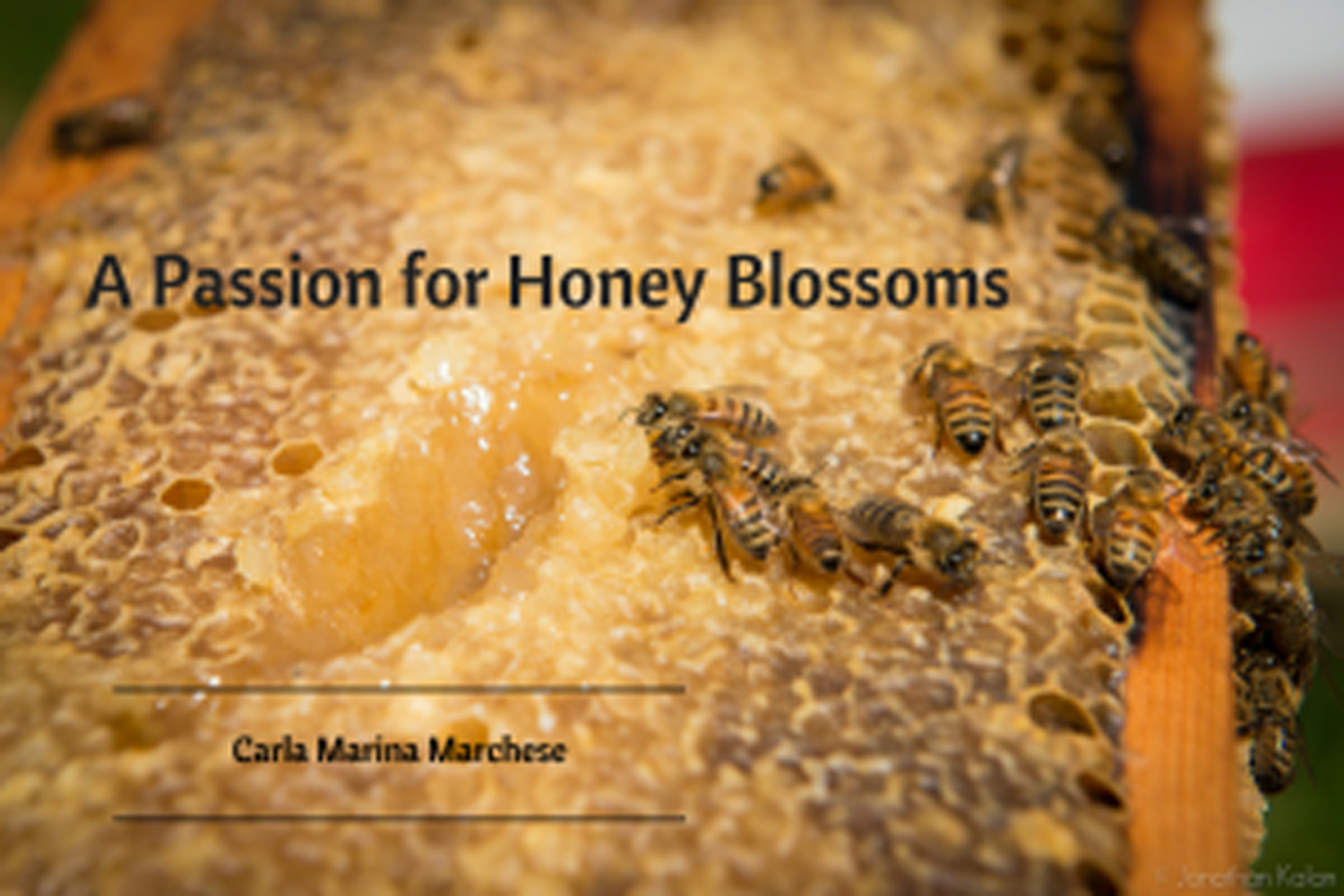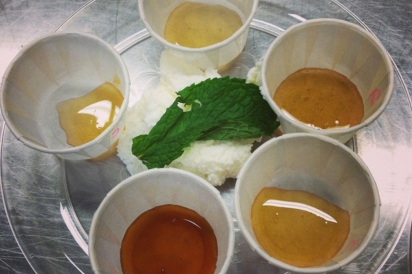A Passion for Honey Blossoms in Connecticut
A serendipitous visit to a neighbor’s apiary fifteen years ago would change my entire relationship with bees and honey, and ultimately the course of my life. It was a springy Saturday afternoon in April when I found myself within arms length of thousands of buzzing honeybees. Howland – a local and accomplished beekeeper – smoked the entrance to his beehive then opened the cover to peek inside; as he coolly removed a wooden frame, dozens more bees wandered across his hands. My heart was pounding faster than a bee’s wing when he invited me to poke my finger into the glistening honeycomb to taste the virgin honey. Thrilled and terrified, I managed to scoop up a dollop of honey then navigate my sticky finger under my bee veil and onto my tongue. Still warm from the bee’s bodies, I savored the sweetest, most delicate flavors that were both complex and layered. It was like nothing I ever tasted, at that very moment I knew I must have my very own bees making this divine honey.
Concocting Sweetness
The bees’ recipe for making honey has not changed for thousands of years. It begins inside the hive where female foragers are recruited by scout bees that perform dances to communicate where the sweetest smelling nectar for honey-making can be found. These elaborate dances map out the distance between the floral source, the sun, and their hive, all within a 3-4 mile radius. Once a worker descends upon a blossom, she unrolls her proboscis – a straw-like tongue – and begins sipping liquid nectar to fill her honey sac. On the return flight to her hive, she adds some of her own enzymes to activate the magical transformation of nectar into honey. Younger house bees eagerly wait at the entrance to accept the regurgitated nectar, add more of their enzymes, and to deposit it into a hexagonal beeswax cell where she will proceed to reduce the water content to an exact 17% by fanning it with her wings. When the honey is fully ripe, she caps it with more beeswax to keep it clean and safe.
Honeybees in Connecticut spend long winters clustered inside their hive so they require copious amounts of honey to feed their colony until nectar becomes available again in the spring. For this reason, they hoard honey and skilled beekeepers can harvest the surplus from the honey filled frames that hang inside a box above the nest called a honey shallow. One by one, beekeepers slice open the pearly white beeswax cappings on both sides of each frame to expose the freshly made honey, then they secure them inside a stainless steel, circular honey extractor that will spin the liquid honey out of the hundreds of tiny wax cells. As the honey dribbles to the bottom of the extractor, it can be easily poured out through a gate and into a pail to decant until it’s time to bottle it. Nothing is wasted during a honey harvest. Even the beeswax cappings are cleaned and made into the finest candles, hand salves, and even wood polish.
A Flavor For Every Season
If this all sounds delightfully romantic, I must inform you that a bee makes only 1/12th of a teaspoon of honey in her entire life and although there are some 300 nectar bearing plants in the U.S., beekeepers only harvest 1/3 of what we actually consume. This makes pure honey quite rare and is perhaps the reason the ancients dubbed it “liquid gold”! In fact, making nature’s oldest sweetener is highly dependent upon a host of other factors, like the geographic region, its climate and soil, and regional and ever changing seasons. These variables determine the quality and quantity of a honey harvest. Cold, rainy, or windy days are not ideal for bees to do their work or for plants to provide sufficient pollen or nectar, so pure honey is precious and every drop is a miracle of nature.
Connecticut enjoys a mosaic of floral sources and honey to please every palate. Ultimately, it is the flowers that determine the color, aroma, and flavor profile of a honey. Bees have intrigued me in many ways but it is honey tasting that has become my passion. It is possible to taste the varying flavor nuances of honey produced throughout our state. In general, spring honey tends to be light in color and delicately flavored. While the seasons progress the color changes from a medium amber to very dark, revealing richer flavors. But ultimately, Mother Nature has the last word, together with the influence of the beekeeper’s colony management and harvest style.
Here is a general overview of a few prominent floral sources around Connecticut and the sensory qualities you can expect when tasting the honeys made from them:
| Floral Source / Honey | Color | Aroma / Flavors |
| Black Locust / Spring | Transparent to very light amber | Beeswax, sweet, delicate |
| Linden / Summer | Light to golden amber, often with a green cast | Butterscotch, green fruit, camphor, minty finish |
| Dandelion / Spring | Golden amber / yoke | Hay, ammonia, chamomile |
| Clover / Spring | Light amber | Dried grass and somewhat spicy |
| Tulip poplar / Spring | Dark amber | Cooked fruit, raisins |
| Japanese Knotweed / late summer | Dark amber | Maple, burnt sugar, caramel |
| Goldenrod / late summer | Golden yellow | Bright, fragrant flowers, winey |
| Wildflower / regional | Medium amber | Warm brown sugar, varies from fruity to earthy |






